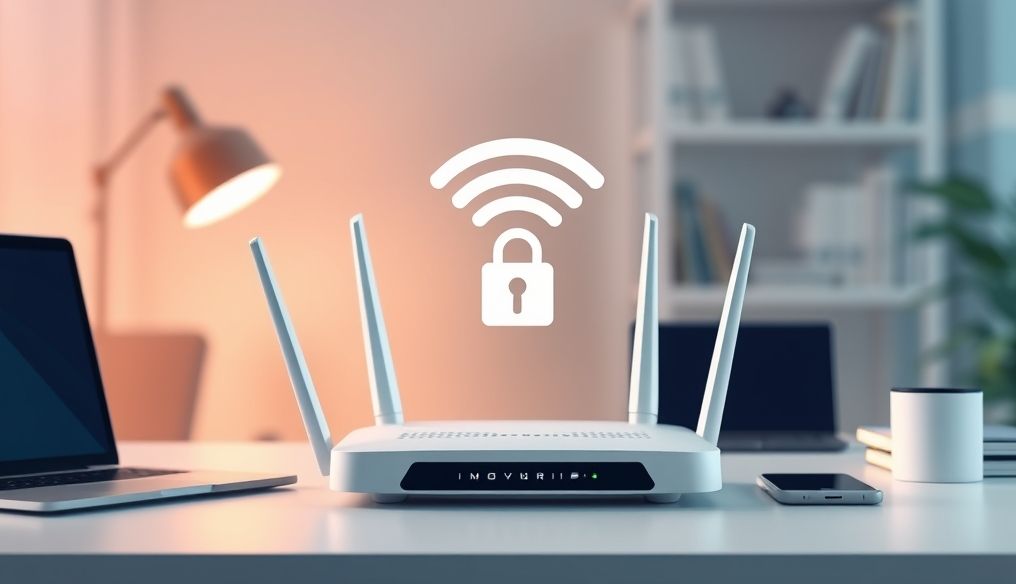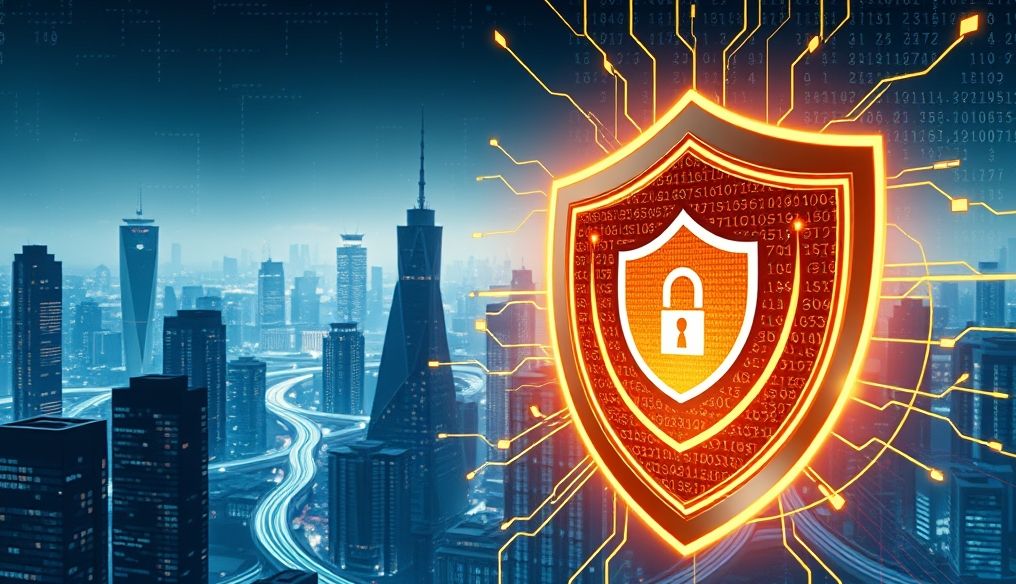Introduction: The Importance of Protecting Your Home Wi-Fi Network
In an increasingly internet-dependent world, your home Wi-Fi network serves as the primary gateway to the digital realm. Through it, we browse the internet, conduct financial transactions, communicate with friends and family, and control smart devices in our homes. With this growing reliance, the importance of protecting your Wi-Fi network from hacking increases, as intruders can access your personal and financial data, spy on your online activities, and even control your connected devices.
Imagine a stranger wandering around your home without permission, reading your private messages, stealing your banking information, and controlling your smart devices. This scenario isn't far from reality when it comes to an unprotected Wi-Fi network. Therefore, taking steps to protect your network is essential to protecting your privacy and security.
Chapter 1: Understanding the Risks Surrounding Wi-Fi Networks
Before we delve into how to protect your Wi-Fi network, it's important to understand the potential risks it faces. Here are some common scenarios:
- Unauthorized Access: Hackers can access your network and use it to browse the internet anonymously, which could expose you to legal liability for their activities.
- Data Theft: Hackers can intercept data being sent over your network, such as passwords, credit card numbers, and other personal information.
- Malware Injection: Hackers can inject malware onto your network-connected devices, which can lead to file corruption, data theft, or even remote device control.
- Espionage: Hackers can monitor your online activities, such as the websites you visit and the messages you send and receive.
- Denial-of-Service (DoS) Attacks: Hackers can flood your network with unwanted traffic, making it unavailable to you and others who use it.
Statistics indicate that cyberattacks on home networks are constantly increasing, underscoring the urgent need to take preventative measures to protect your network and data.
Chapter 2: The First Step: Changing the Network Name (SSID) and Default Password
The first and most important step in protecting your Wi-Fi network is to change the network name (SSID) and default password. Most routers come with default network names and passwords that are easy to guess, making them an easy target for hackers.
Changing the Network Name (SSID):
- Don't Use Personal Information: Avoid using your name, address, date of birth, or any other personal information in the network name.
- Choose a Unique Name: Choose a unique and unfamiliar name that is difficult to guess.
- Don't Advertise Your Presence: Avoid using names like "Home Wi-Fi" or "My Internet Network."
Changing the Default Password:
- Use a Strong Password: The password should be at least 12 characters long and include a mix of uppercase and lowercase letters, numbers, and symbols.
- Don't Use Common Passwords: Avoid using common passwords like "123456," "password," or "qwerty."
- Use a Password Manager: A password manager can create strong passwords and store them securely.
- Change the Password Regularly: Change the password every few months to keep your network secure.
Remember that a strong password is the first line of defense against hackers. Invest some time in creating a strong password and storing it securely.
Chapter 3: Enabling WPA3 Encryption (If Supported)
Encryption is a system that encrypts the data being sent over your Wi-Fi network, making it unreadable to hackers. There are several types of encryption protocols, but WPA3 is the newest and most secure.
If your router supports WPA3, be sure to enable it. If it doesn't support WPA3, use WPA2-AES as an alternative. Avoid using older encryption protocols like WEP and WPA, as they have known security vulnerabilities.
How to Enable WPA3:
- Log in to your router's management interface.
- Look for wireless security settings.
- Choose WPA3 or WPA2-AES as the encryption protocol.
- Save the changes and restart the router.
Enabling the appropriate encryption protocol is a crucial step in protecting your data from theft.
Chapter 4: Enabling the Firewall
A firewall is a security system that monitors incoming and outgoing network traffic, blocking any suspicious traffic. Most routers come with a built-in firewall, but it may not be enabled by default.
Make sure the firewall is enabled on your router. You can also install firewall software on your network-connected devices for added security.
How to Enable the Firewall on Your Router:
- Log in to your router's management interface.
- Look for firewall settings.
- Make sure the firewall is enabled.
- You may also be able to customize the firewall settings to block certain types of network traffic.
- Save the changes and restart the router.
A firewall is an important line of defense against cyberattacks.
Chapter 5: Hiding the Wi-Fi Network (SSID Hiding)
Hiding the Wi-Fi network (SSID Hiding) is a security measure that makes your network invisible to devices searching for available Wi-Fi networks. This doesn't prevent skilled hackers from finding your network, but it can deter casual users from trying to connect to it.
To enable Wi-Fi hiding, you'll need to log in to your router's management interface and look for wireless broadcast settings. Disable the "Broadcast SSID" or "Show SSID" option.
Note: After hiding the Wi-Fi network, you'll need to manually enter the network name (SSID) and password on all devices you want to connect to the network.
Chapter 6: Enabling MAC Address Filtering
MAC address filtering is a feature that allows you to specify which devices are allowed to connect to your Wi-Fi network based on their MAC addresses. A MAC address is a unique identifier assigned to each network-connected device.
To enable MAC address filtering, you'll need to log in to your router's management interface and look for MAC address filtering settings. Add the MAC addresses of the devices you want to allow to connect to the network. Any other device trying to connect to the network will be blocked.
Note: It can be difficult to manage a list of MAC addresses, especially if you have many devices connected to the network. Also, skilled hackers can spoof MAC addresses.
Chapter 7: Regularly Updating Router Firmware
Router manufacturers regularly release firmware updates to fix security vulnerabilities and improve performance. It's important to update your router's firmware regularly to keep your network secure.
You can usually update the router's firmware through the device's management interface. In some cases, the firmware may be updated automatically.
Note: Before updating the router's firmware, be sure to read the instructions carefully and back up your current settings.
Chapter 8: Using a Virtual Private Network (VPN)
A Virtual Private Network (VPN) is a service that encrypts your internet traffic and hides your IP address. This makes it harder for hackers to track your online activities and steal your data.
You can use a VPN on your devices connected to the Wi-Fi network to protect your privacy and security. There are many VPN services available, some free and some paid.
Note: VPNs may affect internet speed.
Chapter 9: Additional Tips to Protect Your Wi-Fi Network
- Disable WPS: WPS (Wi-Fi Protected Setup) is a feature that allows you to easily connect devices to the Wi-Fi network using a button or PIN code. However, WPS has known security vulnerabilities, so it is advisable to disable it.
- Use a Separate Wi-Fi Network for Guests: If you regularly receive guests, create a separate Wi-Fi network for them. This prevents them from accessing your main network and data.
- Be Careful When Using Public Wi-Fi Networks: Public Wi-Fi networks are not secure, so avoid entering sensitive personal or financial information while using them. Use a VPN to protect your privacy and security.
- Monitor Your Network-Connected Devices: Regularly check the devices connected to your Wi-Fi network to ensure there are no unauthorized devices.
- Use Antivirus Software: Install antivirus software on your network-connected devices to protect against malware.
Conclusion: Continuous Security is Key
Protecting your home Wi-Fi network is an ongoing process that requires vigilance and follow-up. By taking the steps mentioned in this article, you can reduce the risk of hacking and protect your personal and financial data. Remember that continuous security is the key to keeping your network safe.




